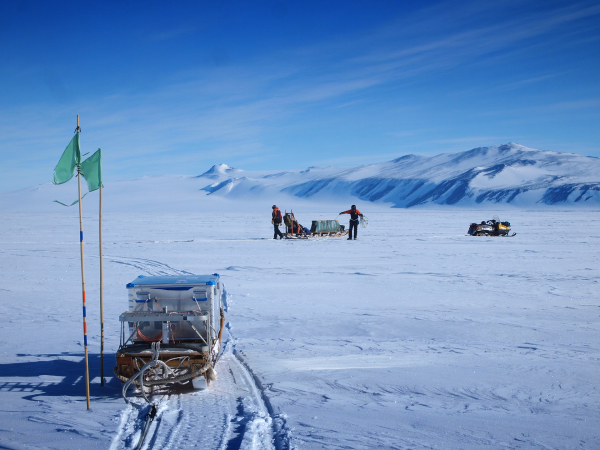Part of the world’s largest ice shelf is melting 10 times faster than the overall average and solar-heated waters beneath the ice shelf are to blame, NIWA research has found.
Marine physicists Drs Craig Stewart and Mike Williams and a team from the UK, studied the north-western corner of the Ross Ice Shelf over several years to build up a record of how it is melting, and the key processes driving it.
“We’ve shown that the ocean is melting the north-western corner of the Ross Ice Shelf much faster than the rest of the shelf, and a lot of that melting is linked to summer heat from the top layer of the ocean,” Dr Stewart says.
The finding is significant because the stability of ice shelves is generally thought to be related to their exposure to warm deep ocean water. However, this research has shown that surface ocean heat also plays a crucial role.
Although the interactions between ice and ocean occurring hundreds of metres below the surface of ice shelves seem remote, they have a direct impact on long-term sea level.
Rapid melt for smaller ice shelves
Floating ice shelves stabilise the parent ice sheet, and loss of the major ice shelves would lead to accelerating ice flow and sea-level rise of several metres or more. Currently the largest ice shelves are melting slowly; but smaller ice shelves that float in seawater just 3 degrees above the freezing point are melting 100-200 times faster, showing the impact that warm ocean water can have.
The team, including scientists from Cambridge University and the British Antarctic Survey, collected four years of data from an oceanographic mooring installed under the Ross Ice Shelf with instruments measuring temperature, salinity and currents. The mooring also included an echo-sounder pointed upwards at the bottom of the ice to measure melt rates.
Mooring boring
Installing the mooring required drilling a hole through 260 m of ice and then lowering it into 600 m of ocean beneath the shelf.
In addition, the team used extremely sensitive custom-made radars to survey the changing thickness of the ice shelf. Stewart measured melt rates during two Antarctic field seasons.
“We were able to generate a map of the melt rates using incredibly precise measurements,” Dr Stewart said.
Information from the instruments deployed on the mooring showed that warm water from the upper layer of the open sea transports heat into the cavity under the ice shelf causing melt rates to nearly triple during summer.
The melting is affected by a large ocean expanse in front of the Ross Sea Ice Shelf that is devoid of sea ice due to strong offshore winds. This area, known as the Ross Sea Polynya, absorbs solar heat quickly in summer and in turn influences the ice shelf cavity.
The findings, which have just been published in prestigious scientific journal Nature Geoscience, are significant for several reasons. Firstly, they suggest that conditions in the ice shelf cavity are more closely coupled with the surface ocean and atmosphere than previously assumed. This implies that melt rates near the ice front will respond quickly to changes in surface climate. Dr Williams says that while this process has been happening for a long time, he believes it could change.
“Climate change is likely to result in less sea ice, and higher surface ocean temperatures in the Ross Sea, suggesting that melt rates in this region will increase in the future.”
“This study builds our understanding of the important but rarely observed processes that drive melting of ice shelves. Understanding and monitoring these processes is critical to predicting the future of the ice sheet and global sea level.”



